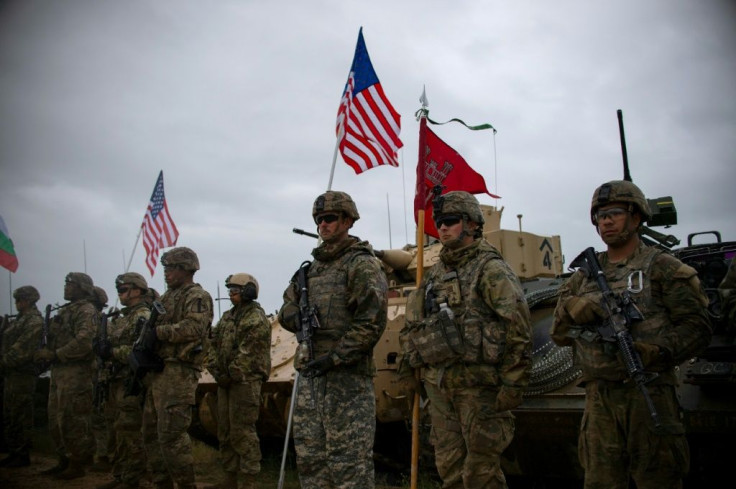Typhon Weapon System: US Army's Cutting-Edge Launcher Successfully Deploys Tomahawk Missile

KEY POINTS
- The Typhon Weapon System, developed by Lockheed Martin, is a ground-based missile launcher
- The system recently demonstrated its operational capability by launching a Tomahawk land-attack cruise missile
- This achievement comes six months after the system's initial delivery to the US Army
The Typhon Weapon System, the latest ground-based missile launcher developed by Lockheed Martin, demonstrated its operational capability by launching a Tomahawk land-attack cruise missile, marking a significant achievement six months after its initial delivery to the U.S. Army.
The Rapid Capabilities and Critical Technologies Office (RCCTO) recently revealed the 1st Multi-Domain Task Force soldiers and the U.S. Navy Program Executive Office Unmanned Aviation and Strike Weapons joined forces to accomplish this significant milestone. Collaborating together, they successfully conducted a demonstration wherein a Tomahawk missile was launched from the army's prototype Mid-Range Capability system.
During this live-fire exercise, the soldiers achieved yet another milestone by launching a Tomahawk missile, following seamless communication between the Battery Operations Center and the launcher. This successful test builds upon the previous accomplishment of the Mid-Range Capability system, which demonstrated its full operational capacity earlier this year with the successful launch of an SM-6 missile, according to Eurasian Times.
"This test follows the successful launch of an SM-6 missile from the Mid-Range Capability system earlier this year, confirming the full operational capability of the system," RCCTO said in a statement a day after the test.
Last year in December, media reports surfaced indicating Lockheed Martin had supplied the U.S. Army with one of the initial four prototype Typhon Mid-Range Capability (MRC) weapon systems. This ground-based launcher was specifically developed as a component of the army's ongoing initiatives to enhance their long-range precision fire capabilities.
Meanwhile, earlier this year, the Typhon weapon system underwent a test in which it successfully launched a ship-launched Standard Missile-6 (SM-6). This recent test launch involving the Tomahawk missile is in line with the US Army's objective of attaining a certain level of operational capability with the initial MRC battery by the end of the fiscal year 2023, which is scheduled for September. These test launches are crucial steps toward achieving the service's goals in bolstering its long-range precision fire capabilities.
According to the U.S. Army, the primary utilization of the Typhon system is against land-based targets, employing either the Tomahawk or the SM-6 missile. Although the Tomahawk possesses some capability against ships, the Block-1A variant of the SM-6 has limited potential for engaging both land and sea targets.
Initially designed as a surface-to-air missile, the SM-6 has expanded its capabilities to include anti-ship functionality, which has undergone successful testing.
The development of the MRC/ "Typhon" missile by the U.S. Army aims to address the mid-range capability gap that exists between the Precision Strike Missile (PrSM) with a range of 300 miles and the Long-Range Hypersonic Weapon with a range of 1,723 miles. The purpose of the MRC system is to provide the capability to engage targets at distances of up to 1,118 miles. By bridging this gap, the army seeks to enhance its operational capabilities by ensuring the availability of a missile system that can effectively reach targets within the mid-range distance.
"The MRC rapidly progressed from a blank piece of paper in July 2020 to the soldiers' hands in just over two years. The [Rapid Capabilities and Critical Technologies Office] team, as well as our joint service and industry partners, delivered this hardware so soldiers can begin training as quickly as possible," Lt. Gen. Robert Rasch, a senior official overseeing the weapon's development, said last year.
© Copyright IBTimes 2024. All rights reserved.











